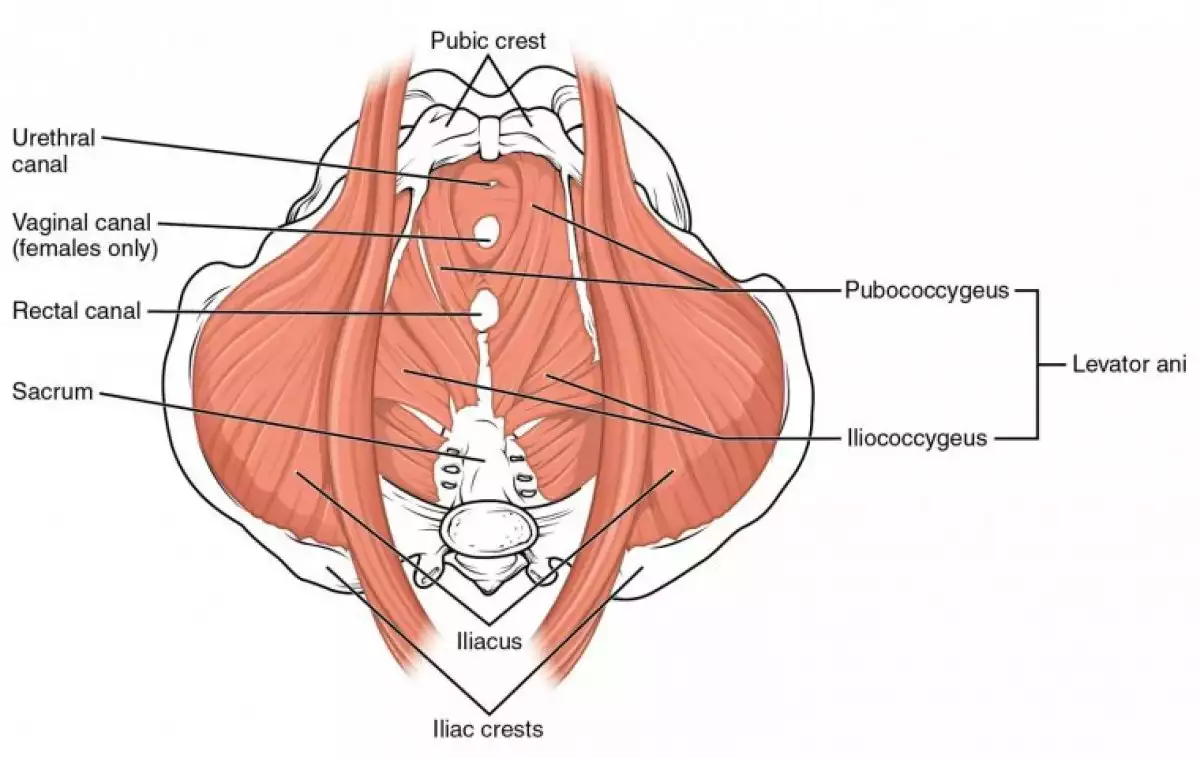Kegel exercises have become extremely popular, although their health benefits are not entirely known by many people. In the following article, we aim to explain what they are, talk about their benefits, and offer a step-by-step guide to doing Kegel exercises correctly for both men and women.
One of the healthiest things we can do is exercise. This recommendation doesn't only refer to strengthening the external muscles, visible to the naked eye, such as the abdomen or triceps. There are also exercises that help internal tissues, such as the pelvic floor muscles.
What are Kegel exercises?
Pelvic floor muscle training, colloquially refered to as Kegels, is a set of exercises that strengthen the pelvic floor muscles, which support the bladder, uterus, small intestine, and rectum.
In medical terms, these exercises consist of contracting the pubococcygeus muscle, also known as the PC muscle. Both men and women have this muscle which facilitates this type of exercise.
In women, the PC muscle wraps around the vagina, and together with two other muscles called iliococcygeus and puborectalis, form the structure which elevates the rectum. For men, the pubococcygeus muscle extends from the end of the spinal cord down to the base of the penis, and it connects with the pubic bone.
Due to its placement in our bodies, the stimulation of this muscle is associated with bladder control and sexual arousal. Some people have even called it "the love muscle."
The term "Kegel exercises" comes from American gynecologist Arnold Kegel that in the late 1940s developed a series of exercises to strengthen the pelvic muscles. In the beginning, they were only recommended for women to alleviate the effects of urinary incontinence, but nowadays there are many more benefits to this type of muscle training that can also benefit men.
Benefits for men and women
Two of the main benefits of Kegel exercises are increased bladder and bowel control. Generally speaking, these problems appear due to old age, weight gain, pregnancy and giving birth, or after prostate and gynecological surgeries.
Moreover, Kegels can help both men and women reach a more powerful orgasm during intercourse or sexual stimulation.
It's also a great exercise to control ejaculation during sex, which is why it is used as a remedy against premature ejaculation.
Although Kegels are recommended to both men and women, there may be individual variations in how they are performed considering the differences in male and female anatomy.
There is also a significant advantage in the fact that anyone can do these exercises, at any time of the day, without leaving their house. The important thing is to make sure you've emptied your bladder, and find a comfortable position to practice strengthening your pelvic muscles.

How to do Kegel exercises? Step by step
To get started practicing Kegel exercises, you need to locate the pubococcygeus muscle. This can result tricky given its position inside our bodies.
You could have a look at anatomy images to get an idea of the exact location of the PC muscle, or you could do contraction movements, focusing on your genital area.
One way of identifying this muscle is to stop urination in midstream; what you feel tightening is your PC muscle. For the exercises to be practical, however, you need to do them when your bladder is empty.
Kegel exercises for women
Once you've located the PC muscle, and you've gotten the hang of the contractions, there are specific exercises you can do to stimulate it.
Contracting and releasing the pelvic muscles. We recommend you find a comfortable position, preferably lying down. Try contracting for three seconds at a time, then relaxing for three more and repeating at least ten times.
In the same position as before, contact the rectal muscles in three sets of 10 repetitions each.
Contract the pelvic muscles for 10 to 20 seconds at a time with small breaks in between, and gradually hold the contraction for longer as your resistance increases.
Contract the muscles which surround the vagina in 10 quick repetitions and follow them by another 10, but this time, slower repetitions.
Kegel exercises for men
Another way to find the PC muscle is to stop ejaculation; the muscle contracting is the one you are looking for. Here are some useful and easy exercises to do:
Open and close the urethral orifice so that you can feel the PC muscle contracting. Maintain the contraction for 3 seconds with a 3 second rest in between, aim for ten repetitions.
Contract and relax the rectal muscles, again aim for ten repetitions with 3 seconds hold and 3 seconds rest.
Now do faster and stronger repetitions; around ten consecutive stronger ones followed by ten slower reps.
Similarly to any workout routine, in the case of Kegel exercises, the recommendation is to increase the number of repetitions and the contraction time slowly; this way you guarantee resistance and strength. You shouldn't forget about your breath, either, because breathing is fundamental in keeping your muscles relaxed and facilitating the contractions. To see results, you will need to do these exercises daily. Just like with any other type of workout, you need to be constant and determined to enjoy the result.
Better Kegels: How to do kegel exercises, and why they work
- This article about "Kegel Exercises" was originally published in Spanish in Viviendo La Salud
